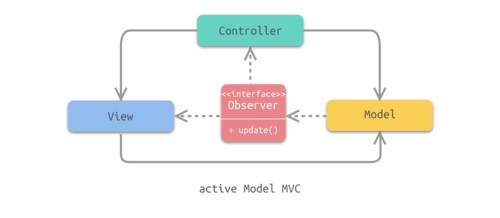教程-【唐老师】Unity热更新之Lua语法
环境搭建以及helloworld
第一个程序
1
2
3
4
5
6
7
8
9
10
11
12
13
14
15
16
17
18
19
|
print("Hello World!")
|
变量
空 nil、 数值 number、字符串 string、布尔 boolean
函数 function
表 table
数据结构 userdata
协同程序 thread(线程)
lua中所有的变量都不需要声明变量类型,类型C#的var
lua中的变量可以随便赋值,自动识别类型//我理解为弱类型
1
2
3
4
5
6
7
8
9
10
11
12
13
14
15
|
a = nil
print(a)
a = 1.2
print(a)
a = "helloworld"
print(a)
a = false
print(false)
|
通过type可以获得变量类型
type函数也有返回值,是string类型的
使用没有声明过的变量,不会报错,默认值为空
字符串操作
1
2
3
|
a = "双引号字符串"
b = '单引号字符串'
|
取字符串长度,中文在lua中占3个长度
1
2
3
4
5
6
| s = "aBcDeF"
print(#s)
s = "aBcDeF字符串"
print(#s)
|
字符串多行打印
1
2
3
4
5
6
7
| print("123\n123")
s = [[123
123
123
]]
print(s)
|
字符串拼接
1
2
3
4
5
6
7
| print("123".."456")
s1 = "123"
s2 = 456
print(s1..s2)
|
占位符
1
2
3
4
5
6
7
8
| print(string.format("我叫紫地丁,我%d岁了",3))
|
其他类型转换到string
1
2
| a = true
print(tostring(a))
|
字符串提供的公共方法
1
2
3
4
5
6
7
8
9
10
11
12
13
14
15
16
17
18
19
20
21
22
23
24
25
26
27
28
29
30
31
32
33
34
35
| str = "aBcDeF"
print(string.upper(str))
print(string.lower(str))
大部分字符串操作不会改变原字符串
print(str)
print(string.reverse(str))
print(string.find(str,"cDe"))
print(string.sub(str,3,4))
print(string.rep(str,2))
print(string.gsub(str,"cD","**"))
a = print(string.byte("Lua"),1)
print(string.char(a))
|
运算符
算数运算符
还是那么些个+-*/%,但没有++,–,也没有复合运算符+=,-=等
还有C#没有的幂运算符^
string可以进行算数操作,会自动转成number
条件运算符
还是那么些个>,<,==,>=,<=
以及有点不一样的不等于~=,即不等于
逻辑运算符
与and,或or ,非not
Lua支持逻辑运算的短路规则
1
2
3
4
5
| print(false and print("123"))
print(true and print("123"))
|
条件分支语句
1
2
3
4
5
6
7
8
9
10
11
12
13
14
15
| a = 9
if a>5 then
print("啊对对对")
else
print("不对不对不对")
end
if a<5 then
print("1234")
elseif a ==5 then
print("555")
else
print ("67890")
end
|
循环语句
1
2
3
4
5
6
7
8
9
10
11
12
13
14
15
16
17
18
19
20
21
22
23
|
num = 0
while num<5 do
num = num+1
print(num)
end
repeat
num=num-1
print(num)
until num<0
for i=1,5 do
print(i)
end
for i = 5,1,-1 do
print(i)
end
|
函数
无参数无返回
1
2
3
4
5
6
7
8
9
10
11
12
13
| function f1()
print("f1")
end
f2 = function()
print("f2")
end
f1()
f2()
|
有参数
1
2
3
4
5
6
7
8
9
10
11
12
13
14
15
| function f3(a)
print(a)
end
f3(2)
f3("123")
f3(true)
f3()
f3(1,2,3)
|
有返回值
1
2
3
4
5
6
7
8
9
10
11
12
13
14
15
16
17
18
19
20
21
22
23
| function f4(a)
return a
end
function f5(a)
return a,"456",true
end
print(f4("123"))
print(f5("123"))
a,b,c = f5("123")
print(a)
print(b)
print(c)
|
函数是一个变量类型
函数重载
- Lua中不支持函数重载,默认调用最后一个声明的函数
变长参数
需要先用一个表将变长参数存起来,再使用变长参数
1
2
3
4
5
6
7
8
9
10
11
12
13
14
15
| function f6(...)
arg = {...}
for i =1,#arg do
print(arg[i])
end
end
f6(1,2,true,"4",5)
|
函数嵌套
1
2
3
4
5
6
7
8
9
10
| function f7()
f8 = function()
print(123)
end
return f8
end
f88 = f7()
f88()
|
Lua中闭包的体现:通过函数嵌套改变参数的生命周期
1
2
3
4
5
6
7
8
9
| function f9(x)
return function(y)
return x+y
end
end
f10 = f9(10)
print(f10(20))
|
闭包函数:声明在一个函数中的函数,叫做闭包函数。
闭包:内部函数总是可以访问其所在的外部函数中声明的参数和变量,即使在其外部函数被返回(寿命终结)了之后。
闭包的特点:
让外部访问函数内部变量成为可能;
局部变量会常驻在内存中;
可以避免使用全局变量,防止全局变量污染;
会造成内存泄漏(有一块内存空间被长期占用,而不被释放)
table实现数组
数组
声明数组
1
| a = {1,2,"3",true,5,nil}
|
取用数组元素
1
2
3
4
5
| print(a[0])
print(a[1])
|
获取数组长度
1
2
3
4
5
6
7
8
9
| print(#a)
b = {1,1,nil,1,1}
print(#b)
|
遍历数组
1
2
3
4
| for i = 1, #a do
print(a[i])
end
|
二维数组
1
2
3
4
5
| a = {{1,2,3},{4,5,6}}
print(a[1][1])
print(a[2][2])
|
遍历
1
2
3
4
5
6
| for i =1,#a do
b = a[i]
for j = 1,#b do
print(b[j])
end
end
|
自定义索引
1
2
3
4
5
6
7
8
9
10
11
12
13
14
15
16
| aa = {[0] = 1,2,3,[-1]=4,5}
print(aa[0])
print(#aa)
aa = {[1]=1,[2]=2,[4]=4,[5]=5}
print(#aa)
aa = {[1]=1,[2]=2,[5]=5}
print(#aa)
|
迭代器遍历
迭代器遍历,主要是用来遍历表的
用#得到表的长度可能不准确,所以常用迭代器遍历表
ipairs
1
2
3
4
5
6
7
8
9
10
11
12
13
| a = {[0]=1,2,[-1]=3,4,5}
for i,k in ipairs(a) do
print(i..k)
end
|
pairs
1
2
3
4
5
6
7
8
9
10
11
|
for i,v in pairs(a) do
print(i..v)
end
|
table实现字典
字典的声明和使用
1
2
3
4
5
6
7
8
9
10
11
12
13
14
15
16
17
18
19
| a = {["name"]="紫地丁",["age"]=3,["1"]=1}
print(a[name])
print(a.age)
a["sex"] = false
print(a.sex)
a.age = 4;
print(a.age)
|
字典的遍历
1
2
3
4
5
6
7
8
9
10
11
12
13
14
15
16
17
18
| for k,v in pairs(a) do
print(k,v)
end
for k in pairs(a) do
print(k)
print(a[k])
end
for _,v in paris(a) do
print(v)
end
|
table实现类
Lua中是默认没有面向对象的,需要我们自己去实现
1
2
3
4
5
6
7
8
9
10
11
12
13
14
15
16
17
18
19
20
21
22
23
24
25
26
27
28
29
30
31
32
33
34
35
36
37
38
39
40
41
42
43
44
45
46
47
48
49
50
51
| Student = {
age = 3,
name = "紫地丁",
Up = function()
print("我成长了")
end,
Learn = function(t)
print(t.name)
print("好好学习,天天向上")
end
}
Student.Up()
Student.sex = false
print(Student.sex)
function Student.Speak()
print("说话")
end
Student.Speak()
print(age)
Student.Learn(Student)
Student:Learn()
function Student:Speak2()
print(self.name.."说话")
end
Student:Speak2()
|
table的公共操作
1
2
| t1 = {{age=1,name = "123"},{age = 2,name = "345"}}
t2 = {name = "紫地丁",sex = true}
|
插入
1
2
3
4
5
6
7
| print(#t1)
table.insert(t1,t2)
print(#t1)
print(t1[3].sex)
|
删除指定元素
1
2
3
4
5
6
7
8
9
10
11
12
|
table.remove(t1)
print(#t1)
print(t1[1].name)
print(t1[3])
table.remove(t1,1)
print(t1[1].name)
|
排序
1
2
3
4
5
6
7
8
9
10
11
12
13
14
15
16
17
18
19
20
21
22
| t2= {5,2,7,9,5}
table.sort(t2)
for _,v in pairs(t2) do
print(v)
end
table.sort(t2,function(a,b)
if a>b then return true
end
end)
for _,v in pairs(t2) do
print(v)
end
|
拼接
1
2
3
4
| tb = {"123","456","789"}
a = table.concat(tb,";")
print(a)
|
多Lua脚本的执行
全局变量和本地变量
我们之前所声明的变量大多是全局变量
如
1
2
3
4
5
6
7
8
9
10
11
12
13
14
15
16
17
18
| a = 1
b = "2"
for i = 1,2 do
c = 3
end
print(c)
fun = function()
tt = "123"
end
print(tt)
fun()
print(tt)
|
用local关键字声明局部变量
1
2
3
4
5
6
7
8
9
| for i = 1,2 do
local d = "3"
end
print(d)
local tt2 = "555"
print(tt2)
|
多脚本执行
使用require关键字实现多脚本执行
test1.lua
1
2
3
4
|
testA = "123"
local testB = "456"
print("test1")
|
test2.lua
1
2
3
4
5
6
7
8
|
require("test1")
print(testA)
print(testB)
|
require也可以接收一个脚本的返回值
1
2
3
|
print("test3")
return 123;
|
1
2
3
4
|
a = require("test3")
print(a)
|
脚本的卸载
再次使用require
test1不会再执行
也就是说,执行过的脚本不会再执行
通过package.loaded[]判断脚本是否执行过
1
2
| print(package.loaded["test1"])
|
也可以通过package.loaded卸载脚本
1
2
3
| package.loaded["test1"] = nil
print(package.loaded["test1"])
|
但是全局变量testA还在,唐老师没有讲这件事
大G表
xxxxxxxxxx4 1local testFun2 = xlua.get_generic_method(CS.Lesson12,”TestFun2”)2local testFun2_R = testFun2(CS.System.Int32)3–第一个参数传调用函数的对象,静态方法不用传4testFun2_R(obj,1)lua
1
2
3
4
5
6
7
8
9
10
11
12
13
14
15
16
17
18
19
20
21
22
23
24
25
26
27
28
29
30
31
32
33
34
35
36
37
38
39
40
41
42
43
44
45
46
47
| for k,v in pairs(_G) do
print(k,v)
end
|
加了local的变量,也就是本地变量不会存到大G表中
可以在大G表中存储键值对
1
2
3
4
5
6
| _G["a"] = 1
_G.b = 123
print(a)
print(b)
|
特殊用法
多变量赋值
1
2
3
4
5
6
7
8
9
10
11
12
13
| a,b,c = 1,2
print(a)
print(b)
print(c)
a,b = 3,4,5
print(a)
print(b)
|
多返回值
1
2
3
4
| function Test()
return 10,20,30,40
end
a,b,c = Test()
|
逻辑与或
and和or不仅可以连接boolean,任何东西都可以用来连接
在lua中,只有nil和false才认为是假
在不同变量的连接中,依然遵守短路规则
1
2
3
4
5
6
7
8
| print(4 and 2)
print(nil and 1)
print(true or 1)
print(false or 2)
|
可以用这种性质模拟三目运算
1
2
3
4
| x = 1
y = 2
biger = (x>y) and x or y
print(biger)
|
协同程序
协程的创建
1
2
3
4
5
6
7
8
9
10
11
12
| fun = function()
print(123)
end
co = coroutine.create(fun)
print(type(co))
co2 = coroutine.wrap(fun)
print(type(co2))
|
协程的运行
协程的创建方式不同,运行方式就不同
1
2
3
4
5
| coroutine.resume(co)
co2()
|
协程的挂起
1
2
3
4
5
6
7
8
9
10
11
12
13
14
15
16
17
18
19
20
21
22
23
24
25
26
27
28
29
30
31
32
| fun2 = function()
local i =1
while true do
print(i)
i = i+1
coroutine.yield(i)
end
end
co3 = coroutine.create(fun2)
coroutine.resume(co3)
coroutine.resume(co3)
isok,temp = coroutine.resume(co3)
print(isok,temp)
co4 = coroutine.wrap(fun2)
temp = co4()
print(temp)
temp = co4()
print(temp)
|
协程的状态
协程有三种状态:dead、suspended、running
1
2
3
4
5
6
7
8
9
10
| print(coroutine.status(co3))
print(co)
co4 = coroutine.create(function()
print(coroutine.status(co4))
end)
coroutine.resume(co4)
|
可通过coroutine.running得到正在运行的线程号
1
2
3
4
5
6
| co5 = coroutine.create(function()
print(coroutine.running())
end)
coroutine.resume(co5)
|
元表
元表概念
任何表变量都可以作为另一个表变量的元表,任何表变量都可以有自己的元表(爸爸)
当我们在有元表的表中进行一些操作时,会执行元表的内容
设置元表
1
2
3
4
5
| meta = {}
myTable = {}
setmetatable(myTable,meta)
|
特定操作-tostring
1
2
3
4
5
6
7
8
9
10
11
12
13
14
15
16
17
18
19
20
21
22
23
24
25
26
27
28
29
| meta2 = {
__tostring = function()
return "我是中国人"
end
}
print(meta2)
myTable2 = {}
setmetatable(myTable2,meta2)
print(myTable2)
meta3 = {
__tostring = function(t)
return t.name.."是中国人"
end,
__call = function(a)
print(a)
print(",紫地丁今年3岁了")
end
}
myTable3 = {
name = "紫地丁"
}
setmetatable(myTable3,meta3)
print(myTable3)
|
特定操作-call
特定操作-运算符重载
1
2
3
4
5
6
7
8
9
10
11
12
13
14
15
16
17
18
19
20
21
22
23
24
| meta4 = {
__add = function(t1,t2)
return t1.age+t2.age
end
}
myTable4 = {age = 1}
setmetatable(myTable4,meta4)
myTable5 = {age = 2}
print(myTable+myTable)
其他运算符的关键字:
+ add
- sub
* mul
/ div
% mod
^ pow
== eq
< lt
<= le
.. concat
如果要用条件运算符比较两个对象,这两个对象的元表要一致才能准确调用方法
|
特定操作-index和newIndex
当子表中找不到某一个属性时,会到元表中index指定的表去找索引
1
2
3
4
5
6
7
8
9
10
11
12
13
14
15
16
17
18
19
20
| meta5 = {}
meta5.__index = {age = 1}
myTable5 = {}
setmetatable(myTable5,meta5)
print(myTable5.age)
meta6father= {}
meta6father.__index = {age = 2}
meta6 = {}
meta6.__index = meta6
myTable6 = {}
setmetatable(myTable6,meta6)
setmetatable(meta6,meta6father)
print(myTable6.age)
|
可以用rewget方法取消index的作用,找表自己的变量
1
2
| print(rawget(myTable6),"age")
|
当赋值时,如果赋值一个不存在的索引,那么会把这个值赋值到newindex所指的表中,不会修改自己
1
2
3
4
5
6
7
8
9
10
11
12
|
meta7 = {}
myTable7 = {}
meta7.__newindex = {}
setmetatable(myTable7,meta7)
myTable7.age = 1
print(myTable7.age)
print(meta7.__newindex.age)
|
可以用rewset方法取消newindex的作用
1
2
3
| rawset(myTable7,"age",2)
print(myTable.age)
|
获取元表
1
2
| print(getmetatable(myTable6))
|
Lua面向对象之封装
面向对象 类 都是基于table来实现的
1
2
3
4
5
6
7
8
9
10
11
12
13
14
15
| Object = {}
Object.id = 1
function Object:new()
local obj = {}
setmetatable(obj,self)
self.__index = self
return obj
end
local myObj = Object:new()
print(myObj.id)
|
Lua面向对象之继承
实现一个用于继承的方法
1
2
3
4
5
6
7
8
9
10
11
12
13
14
15
16
17
18
19
20
21
|
function Object:subClass(className)
_G[className] = {}
local obj = _G[className]
self.__index = self
obj.base = self
setmetatable(obj,self)
end
Object:subClass("Person")
local p1 = Person:new()
print(p1.id)
p1.id = 100
print(p1.id)
local p2 = Person:new()
print(p2.id)
|
Lua面向对象之多态
1
2
3
4
5
6
7
8
9
10
11
12
13
14
15
16
17
18
19
20
21
22
23
24
25
26
|
Object:subClass("GameObject")
GameObject.posX = 0
GameObject.posY = 0
function GameObject:Move()
self.posX = self.posX +1
self.posY = self.posY +1
print(self.posX)
print(self.posY)
end
GameObject:subClass("Player")
local p1 = Player:new()
p1:Move()
function Player:Move()
self.base:Move()
print("移动")
end
p1:Move()
|
目前这种写法有很大问题
1
2
3
4
5
| local p2 = Player:new()
p2:Move()
|
改写Player的Move方法
1
2
3
4
5
6
7
8
9
10
11
12
13
14
| function Player:Move()
self.base.Move(self)
print("移动")
end
p1:Move()
p2:Move()
|
面向对象汇总
1
2
3
4
5
6
7
8
9
10
11
12
13
14
15
16
17
18
19
20
21
22
23
24
25
26
27
28
29
30
31
32
33
34
35
36
37
38
39
40
41
42
43
44
45
46
47
48
49
50
51
52
53
54
55
56
57
|
Object = {}
function Object:new()
local obj = {}
self.__index = self
setmetatable(obj,self)
return obj
end
function Object:subClass(className)
_G[className] = {}
local obj = _G[className]
obj.base = self
self.__index = self
setmetatable(obj,self)
end
Object:subClass("GameObject")
GameObject.posX = 0
GameObject.posY = 0
function GameObject:Move()
self.posX = self.posX +1
self.posY = self.posY +1
end
local obj = GameObject:new()
print(obj.posX)
obj:Move()
print(obj.posX)
local obj2 = GameObject:new()
print(obj2.posX)
GameObject:subClass("Player")
function Player:Move()
self.base.Move(self)
print("移动")
end
local p1 = Player:new()
print(p1.posX)
p1:Move()
print(p1.posX)
|
Lua自带库
时间
1
2
3
4
5
6
7
8
9
10
11
12
13
14
15
16
17
18
19
20
21
22
23
24
25
26
27
28
|
print(os.time)
print(os.time({year = 2014, month = 8,day = 14}))
local nowTime = os.date("*t")
print(nowTime)
for k,v in pairs(nowTime) do
print(k,v)
end
print(nowTime.hour)
|
数学运算
1
2
3
4
5
6
7
8
9
10
11
12
13
14
15
16
17
18
19
20
21
22
23
24
25
26
27
28
29
30
31
32
33
34
|
print(math.abs(-11))
print(math.deg(math.pi))
prit(math.cos(math.pi))
print(math.floor(23.6))
print(math.ceil(5.2))
print(math.max(1,2))
print(math.min(4,5))
print(math.modf(1.2))
print(math.pow(2,5))
math.randomseed(os.time)
print(math.random(100))
print(math.random(200))
print(math.sqrt(4))
|
其他
1
2
3
4
5
6
7
8
9
10
11
12
|
print(package.path)
package.path = package.path ..";C:\\"
print(package.path)
|
垃圾回收
垃圾回收关键字:collectgarbage
1
2
3
4
5
6
7
8
9
10
11
12
13
14
15
|
print(collectgarbage("count"))
collectgarbage("collect")
print(collectgarbage("count"))
|
Unity热更新开发中,尽量不要使用自动垃圾回收










